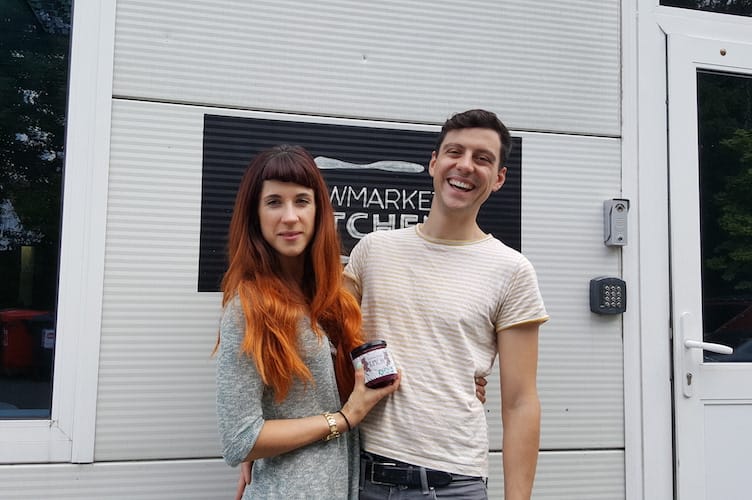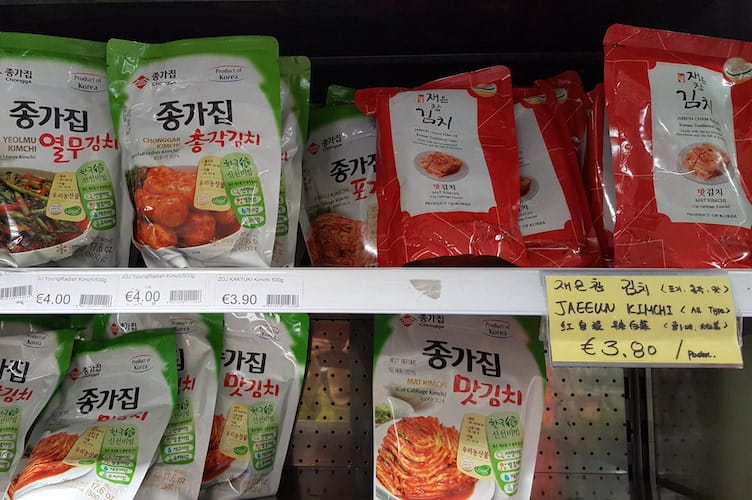From a Dublin base, an anti-caste influencer grows a global audience
In less than two years, Amit Wasnik has attracted tens of thousands of online followers with his posts focused on the life and ideas of BR Ambedkar.
Have you noticed that there’s more kimchi on menus these days? Aoife Martinho and Dom Breslin have come up with a local version they hope will catch on.

One thing machines and robots still can’t do, it seems, is make kimchi.
“It’s a really labour-intensive process,” said Aoife Martinho on a recent Thursday morning, sat in the foyer of a communal kitchen in Bray Business Park.
Martinho and her partner Dom Breslin have been working for some time now to perfect their new Irish kimchi, a Korean fermented-cabbage dish. They’re gradually rolling it out under the brand Cultured Kitchen through health food shops around the country.
The vegetables come in and they check them for bruising, and hand-chop them, and grate them, and mash and melch them up, and it’s almost all done by hand, she said.
“The fact of the matter is, you can’t get the same taste without the love and care.”
Martinho called a kimchi business in New York to ask how to automate the process. “They said, ‘We’re really sorry, if you find an answer to it, let us know.’”
Said Breslin: “Any company we got in touch with just said hire more people.”
A Polish friend told Martinho that her grandma would enlist kids and give them a kind of masher when she was making a kind of sauerkraut, which is not that different to kimchi in some ways.
“That’s what we’re going to do today, try to create a Cultured Kitchen masher,” she said.

Martinho and Breslin’s foray into the kimchi business started about two years ago, although it only got serious recently.
Martinho, who is a nutritional therapist, said she is always looking for something new to cook, and came across kimchi through a foodie friend. “I made some. She hated it. I loved it,” she said.
Some time later, Breslin was having some issues with his stomach and Martinho was learning about the importance of a healthy gut, and remembered kimchi. So she made some more.
She gave some to a friend in college who asked for a sample, and who then asked for 30 jars for her health-food shop in Meath. “I was just kind of doing it on my tod, willy-nilly,” she said.
It’s grown from there.
As more people asked for it, Martinho and Breslin decided to give the business a serious shot, said Breslin. “Once I realised there was a few kind of, well, a call for it.”
There have been some learning moments.
“When I first started I stuffed one of the drums right to the top,” said Martinho, rather than leave a gap for the gases that build up as the cabbage fermented.
“To use the word exploded sounds a little dramatic, but it definitely … it exploded,” she said.
Breslin, meanwhile, woke up one day after a lie in to learn he had given rise to a gas-leak scare. Some builders were working on the house and had noticed a funny smell. The gas man arrived.
“He took two steps up the driveway and said, ‘Well, it’s not gas, but I can smell something,’” said Breslin. They followed the smell to the compost bin, where Breslin had thrown out 20 gallons of kimchi after a failed attempt to speed up the fermentation process.
“It was my own recipe,” said Breslin, not the one they’re now selling.
If you’re used to pungent, squishy kimchi, the Cultured Kitchen kind is slightly different.
In theirs, the cabbage is still crunchy and the taste is more subtle. It’s deep pink, rather than yellowy and translucent.
Compared to some of the imported kimchis that you can pick up in Korean supermarkets such as Han Sung Supermarket, Cultured Kitchen kimchi is mild.
The recipe, says Martinho, is based on one by Sarah Britton, a chef based in Canada who runs the My New Roots blog. She used Britton’s recipe for inspiration, but didn’t have the ingredients.
“I used what I did have, which was Irish cabbages with Granny Smiths [apples], that kind of thing,” she said.

While imports like Chongga mat kimchi have more of a back-of-the-throat chilli burn and a slight fishy taste — likely down to the fermented shrimp sauce and fermented anchovy sauce in the ingredients — the Cultured Kitchen kimchi is sweeter and vegetarian.
As far as the Cultured Kitchen team can tell from their market research so far, their version caters more to mainstream Irish tastes, said Breslin. They ferment the deep-pink kimchi for a week, because that’s the taste that was popular when they tested it. “It’s a preference, we need to do more micro-research.”
It’s also in a jar, rather than the sachet that Chongga’s kimchi comes in. So if you want to keep it in your fridge but avoid kimchi-scented milk in your tea, and kimchi-scented butter on your toast, that’s a bonus.
Right now, Martinho and Breslin are juggling a lot of things: part-time work, manufacturing, and somehow getting out on the road to sell it, said Breslin.
But they have expansion dreams, they want to get the manufacturing down, spread out around the country. “We’re planning on the stratosphere,” said Breslin.
They’re also working on turning the one product into a range with a few different flavours. It’s something they need to do as part of the Supervalu Food Academy, he said. (The academy works to mentors small food producers who want to be stocked in the supermarket.)
For now though, what those flavours will be is secret.